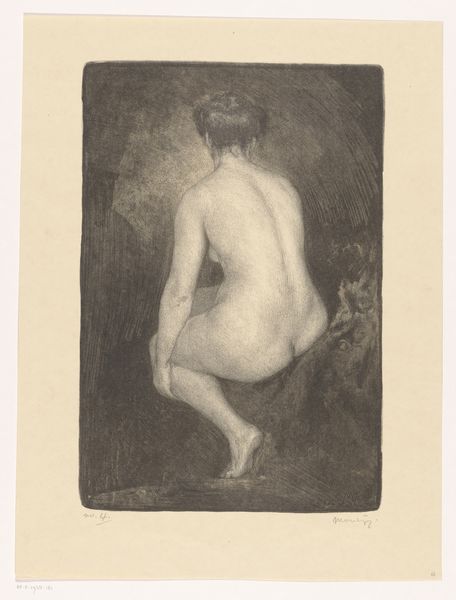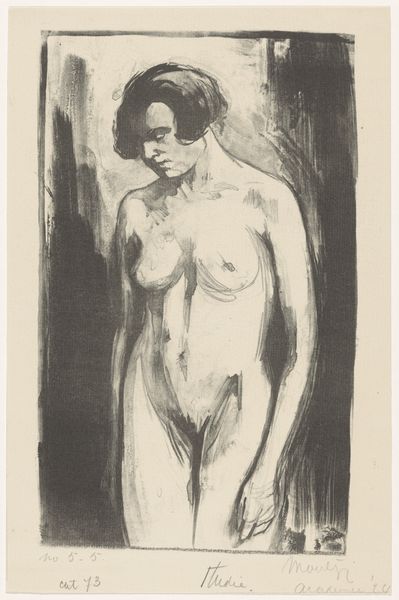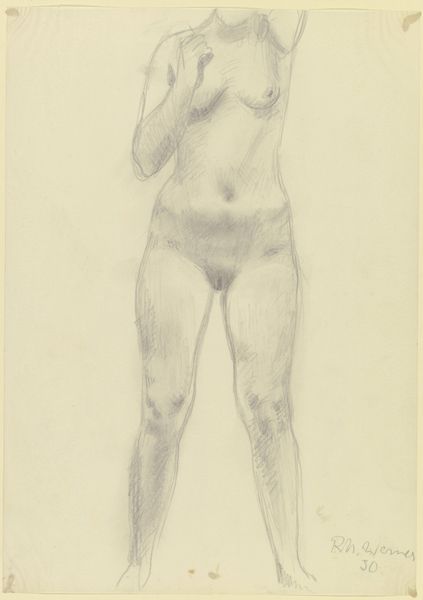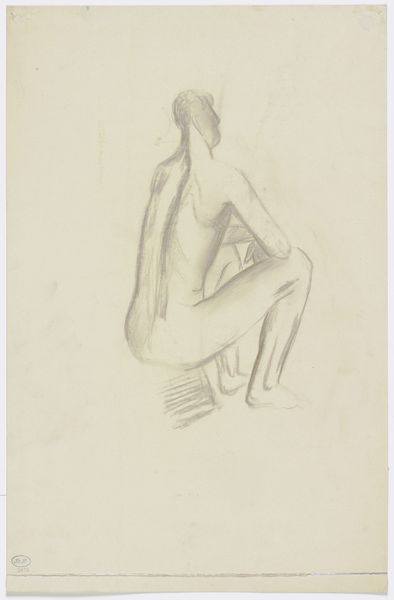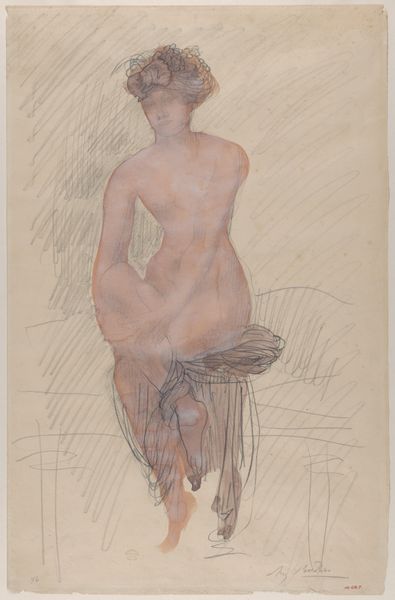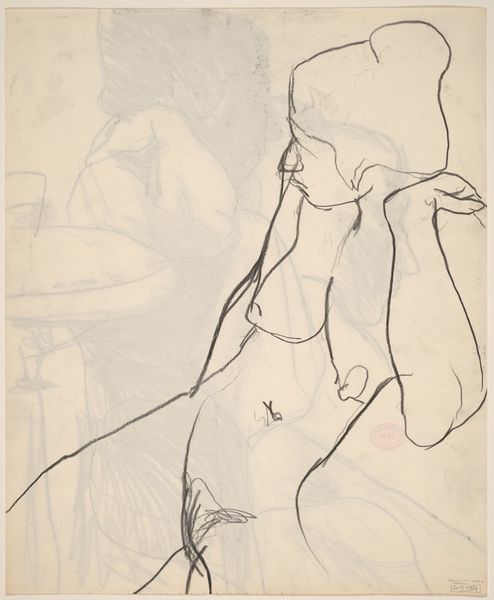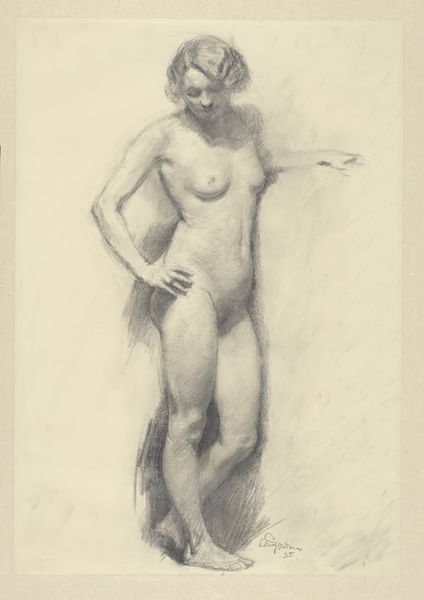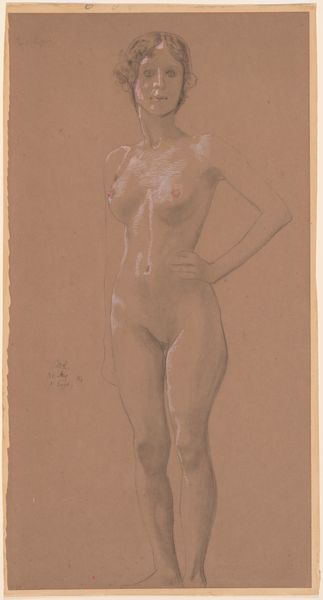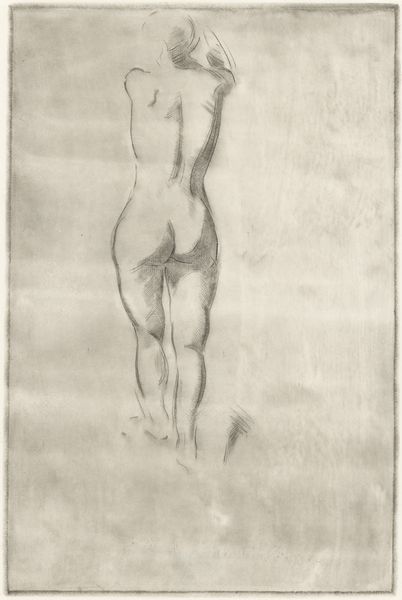
drawing, charcoal
#
drawing
#
charcoal drawing
#
portrait reference
#
expressionism
#
portrait drawing
#
charcoal
#
nude
#
portrait art
Dimensions: height 621 mm, width 416 mm
Copyright: Rijks Museum: Open Domain
Curator: Right, let’s talk about this charcoal drawing. It's by Simon Moulijn, made in 1916. It’s titled "Standing Woman with Bare Torso". Editor: She looks formidable! Like a queen, or at least, a character in a play. The way her head tilts back and her expression, she owns the space, even with the somewhat grim charcoal. Curator: Indeed, the upward tilt of her chin exudes a certain confidence, almost challenging the viewer. I’d suggest looking at how Expressionism embraced emotional intensity, often portraying raw and unfiltered psychological states. Editor: So it is about portraying what she is feeling and less so on what she looks like. You can sense that defiance, but also something vulnerable. And there is an unusual background here; the vertical dark streaks give the sense of being enclosed but also hidden. Curator: Exactly! Consider also how nudes in art historically functioned, usually objects of the male gaze, versus what Moulijn achieves here. We have a figure with agency. Her body language challenges traditional representation. Editor: It seems as if her stance and gaze demands a recognition that goes deeper than the surface; to look for a hidden strength, a kind of fierce understanding within her. I wonder what stories she could tell! Curator: Precisely. Moulijn subverts those power dynamics. What strikes me about keeping in mind that date, 1916, the nude transforms from simple objectification into a complex study of resilience amidst times of immense societal turbulence. Editor: This piece definitely lingers in the mind. Thanks for shedding light on how the period influenced both his rendering, and her presence. Curator: Absolutely, understanding the piece in its historical context and aesthetic intention lets one delve a bit deeper. I always walk away from this artwork contemplating those untold narratives simmering just below the surface.
Comments
No comments
Be the first to comment and join the conversation on the ultimate creative platform.

